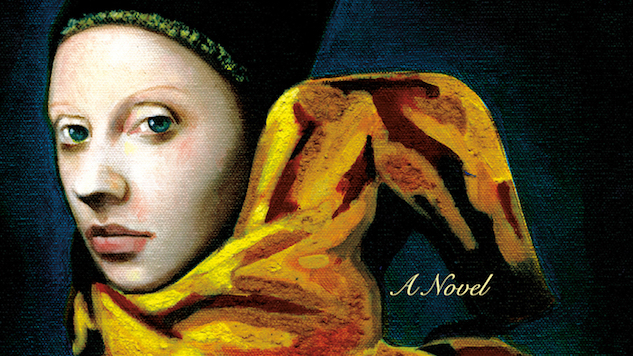
It’s 1636 in Amsterdam. Sara de Vos, the first woman to be admitted into the Guild of St. Luke, is also the only known Baroque Dutch Woman to have ever painted a landscape. Upon losing her daughter, de Vos burns her grief onto canvass with a “winter scene at twilight,” a young girl staring out to skaters on a frozen river. The painting is titled At the Edge of a Wood. Her unique circumstances “allowed her to cross over into a male-dominated world.”
Dominic Smith’s historical-fiction meets mystery novel, The Last Painting of Sara de Vos, recently won Amazon’s best book of the month. His Sara de Vos is a fictional artist, inspired by the lives and paintings of Sara van Baalbergen and Judith Leyster, the first two women painters to be admitted to a Guild of St. Luke in the Netherlands. Setting out to fill in the “gaps and silences of art history,” Smith uses the fictionalized paintings of Sara de Vos as a window into the novel’s three characters, who span three continents over three centuries.
The second narrative in the book takes place in 1957. The painting, sold to a Dutch Banker, is passed down for 300 years through the wealthy de Groot family before finding its home in Manhattan. Marty de Groot, a Manhattan patent attorney, often gazes into the painting’s “wintry suspension” that “never fails to still his thoughts.” Throughout the novel, there is often a transcendent charm to At the Edge of a Wood. Both in Smith’s elegiac description of it on the page as well as the effects the painting enchants onto its beholder.
Staring into the painting one night, Marty de Groot notices something awry. Not only is the painting reframed, but its wintry scene is “fogged beneath layers of antique varnish.” A gumshoe leads him to Ellie Shipley, an art history student working on her dissertation on female painters of the Dutch Golden Age. She is also an expert in the era, and moonlights as an art restorer.
Overlooked as an artist by her male peers, she finds retribution against the “old boy network” in forging At the Edge of a Wood for a client. Smith details the forgery process with microscopic attention but the novel’s blend of suspense and deep characterization keep it moving along at page turning pace.
To retrieve the painting, Marty de Groot assumes a made up name and “fakes his way” into Ellie Shipley’s life, seeking both vengeful and eventually romantic interests. From there, the chapters go back and forth between finishing Sara de Vos’s harrowing story and setting the suspense with Ellie Shipley 43 years later, as a renowned art historian in Sydney Australia. In Sydney, there is an upcoming exhibition she is curating of female painters of the Dutch Golden Age and the forgery has shown back up. She fears Marty de Groot returns to serve as a wrecking ball to her career and reputation.
Sharply researched, imagined and narrated, The Last Painting of Sara de Vos avoids the traps of sentimental or grandiose writing, despite its subject matter being academic and intense. It’s a revealing and intriguing look into the art world, and at times strips off the pretentions of the art collecting community with an eye for wit. The way Smith writes about how “wintry sunlight slants across Victorian sandstone in the afternoon,” an assignment Ellie Shipely gives her students, is an apt description of his style: pinpointed, perceptive, and perhaps most of all, painterly.
Some of the coverage you find on Cultured Vultures contains affiliate links, which provide us with small commissions based on purchases made from visiting our site. We cover gaming news, movie reviews, wrestling and much more.



